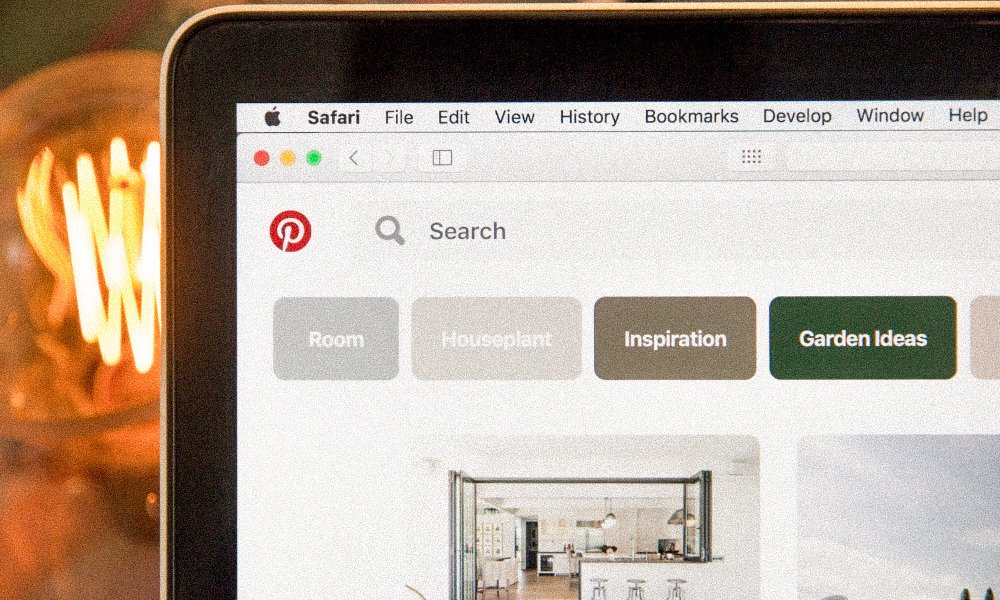Pinterest is back - here’s why you should use it
Kait Richmond is a writer, producer and contributor to the M.T. Deco Blog
A decade ago, we were all on Pinterest. Whether you had a wedding to plan, meal prep to make or a room to be re-decorated, Pinterest was the first step in the process: inspiration.
As social media evolved, it sometimes felt like Pinterest was left behind, especially since it was a “social” platform where people often kept their activity private. (We all knew someone who painstakingly hid their wedding boards from partners they weren’t yet engaged to.) Those of us focused on creating public brands gravitated to places like Instagram where the visuals and words created what felt like a fuller picture.
Over the years, though, Pinterest continued to grow, and has been grabbing headlines for the success it’s finding with Gen Z. Vogue Business wrote about how the platform became “Gen Z’s favorite fashion inspo” and CNBC interviewed CEO Bill Ready about its young users being the “fastest-growing cohort.”
Vogue reports: “When Gen Z internet label Jaded London noticed Pinterest users were pinning 1990s photos of David and Victoria Beckham wearing baggy trousers, it decided to create a modern version. The brand’s ‘parachute pants’ went viral — Jaded has sold over 200,000 pairs since launch in 2022, worth £8.5 million in sales. The brand’s founders say its design team regularly checks Pinterest to predict trends among the under 25s, drawing on its huge bank of nostalgic images from decades past.”
To be clear, Pinterest is still far from the most popular social media platform; Sprout Social said that it’s the 15th most-used platform. But there are many more stats that make a compelling case for building it into your digital strategy:
80% of users say Pinterest makes them feel positive
85% of weekly users have made a purchase from pins
The biggest audience segment is women aged 25-34
Pinterest has one of the longest post lifespans
Shoppers on Pinterest spend twice as much as shoppers on other platforms
When Bill Ready took the job of CEO in 2022, he brought with him a long history in e-commerce and payments at Braintree, Venmo and Google. Since joining, Ready’s leadership has greatly improved the user experience, which resulted in higher revenue and an increase in the monthly user base.
“If you think about where Pinterest was versus where it is, Pinterest [had] solved for digital window-shopping—sort of walking the bazaar,” Ready told Fast Company when asked to reflect on his first year on the job. “But the issue was that all the stores were closed. You couldn’t take action on the stuff that you would find. As we’ve been bringing in that ability to take action for users, we’re finding that it solves a big pain point.”
What has always worked for Pinterest is that it acts as more of a search engine than a social network, and with a better shopping capability, it feels like the company is doing a great job on capitalizing what makes it unique rather than running to copy what its competitors are doing [which, ahem, seems to be a common strategy at the moment]. Fast Company has also published what it calls “the definitive timeline” of Pinterest’s journey - worth a read to understand the company’s strengths and how it is evolving to support and participate in the creator economy.
The bottom line? If you have a product to sell, run a website or blog, or are a creator that works with brands, it’s time to build Pinterest into your strategy. Doing so now will put you ahead of the curve, and fortunately, it’s not too hard to plug in if you have content you’ve made for other platforms.
The way most are doing it right now is to upload your photo or video, include some keywords, post and then pin it to your own boards, which should be a mix of your own content and what you like from others. Here are a few resources to get you started:
Start with this MTD story on the magic of Pinterest
Watch this easy TikTok explainer from a woman who had a viral pin
Dive even deeper on The Pinterest Lab
We wouldn’t leave you without a few creators to look to for, what else, #inspo.
Many of us recently became familiar with Sai De Silva thanks to Bravo’s “Real Housewives of New York City”, but she’s a longtime lifestyle creator who brings a lot of her content over to Pinterest (current stats: 70K followers, 2M monthly views). Her posts are a mix of photo and video, and that includes branded content with Lancome.
Pinterest partners with many of its creators and amplifies them in various ways. Pamyla Cummings is an esthetician who participated in the Creator Inclusion Fund in 2022 and saw a 68% increase in follower growth in the months that followed (current stats: 23K followers, 450K monthly views). Natalie Craig posts plus size fashion inspo and was tapped by Pinterest to contribute to research on the plus size community’s needs. That resulted in what the company calls “industry-first body type technology” meant to increase representation in feeds and search results for women’s fashion and wedding-related content (current stats: 29K followers, 1.4M monthly views).
And although Pinterest is such a visual platform, there is still opportunity if words are more your style. We love Kayla Ihrig’s text-first pins, which will not only show you how it’s done but give you some great tips for how to use Pinterest (current stats: 20.8K followers, 1.9M monthly views).
Happy pinning!

